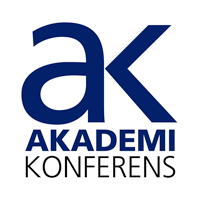Facts:
Exemptions
Exemptions from the general rule must be approved by the vice-chancellor and special procedures followed.
The SLU brand architecture guidelines aim to make communication at the university and its organisations logical, cohesive and efficient. The guidelines can act as support for everything from naming organisations to the choice and formulation of sender.
SLU’s brand architecture builds on one main rule – the SLU master brand is the sender. However, there are two exemptions.
These exemptions apply when there is a legitimate reason for the master brand to be combined with sub-brands, or co-exist with other external brands.
SLU is the master brand and must be the only sender. SLU can also be used together with the descriptive organisation name or operations.

The general rule applies when:
The general rule applies to organisational units, buildings, databases, products, services, etc. This rule also applies to operations with external principals or funders.

There may sometimes be a need to register a name as a brand with the Swedish Patent and Registration Office even if the general rule applies, for example if it is used for commercial activities that need protecting.
In some cases, there may be special reasons for creating a sub-brand to differentiate an operation from SLU, despite the fact that SLU is running and responsible for the operation.

SLU Holding is one example of a sub-brand.
Sometimes SLU collaborates with other partners. This applies for networks, projects and infrastructures run jointly with other higher education institutions or organisations. In these cases, SLU is not the only sender, but one of many.

For example, Academic Conferences is a collaborative brand run by the Swedish University of Agricultural Sciences, Karolinska Institute, Uppsala University and Stocholm University.
Most of the organisations cooperate or collaborate in some way. The collaboration alone is not enough to be considered an exception from the master brand. Nor is it a collaboration brand when SLU is the sole party running and overseeing a network of several different parties.
Exemptions from the general rule must be approved by the vice-chancellor and special procedures followed.